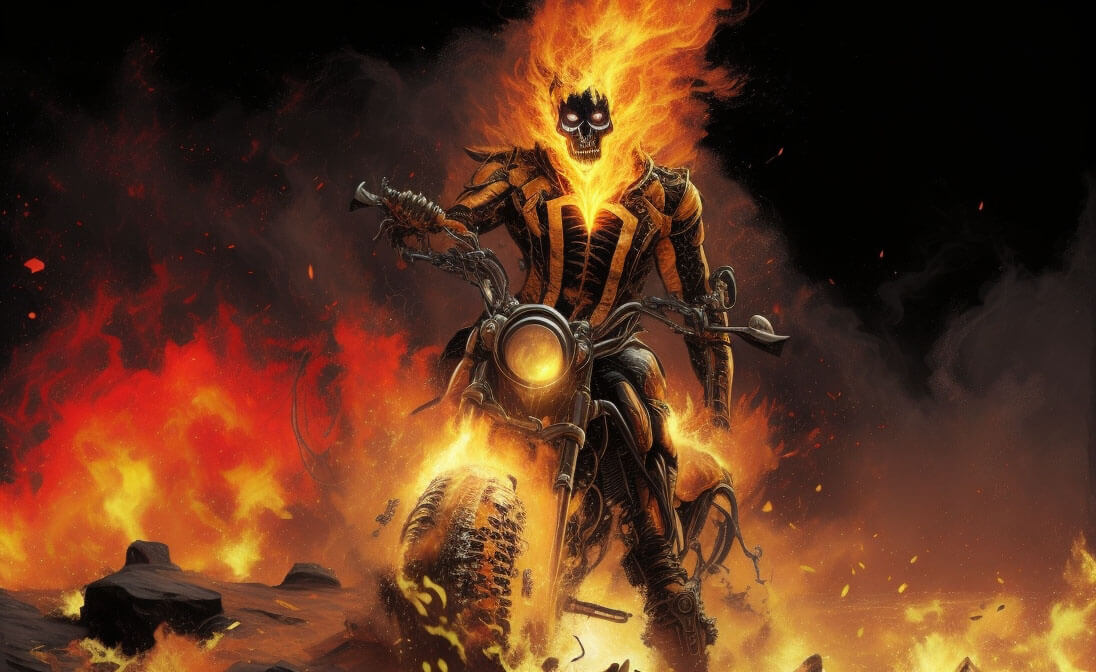Ghost Rider Influence: Unearthing Significance in Biker Culture
Journey into the Unknown: Exploring Motorcycle Myths and Legends
Introduction to the allure of motorcycle myths
Motorcycles embody a certain sense of freedom and rebellion that has intrigued people for generations. These two-wheeled chariots of thunder are more than mere machines. They are vehicles of dreams and myths. Perhaps none is more enchanting or haunting than the Ghost Rider. This spectral figure, an ethereal motorcyclist, has become a compelling part of motorcycling folklore worldwide.
The Ghost Rider is an enigmatic figure who evokes both awe and fear. Often portrayed as a wandering spirit or a vengeful entity, the Ghost Rider, in all its manifestations, is a representation of the unstoppable force of nature and the human desire to conquer it. In many ways, this ghostly figure embodies the same spirit of rebellion and freedom that motorcyclists themselves often aspire to.
Popularity and cultural impact of ghost rider legends
The Ghost Rider’s popularity transcends cultures and borders. From Latin America’s “La Motosierra,” a phantom motorcyclist who aids lost travelers, to Japan’s “Midnight Rider,” who appears on moonlit roads, these stories have inspired countless tales, films, songs, and even comic books.
The appeal of the Ghost Rider lies in its multi-faceted nature. It is a figure of mystery and intrigue, a supernatural entity imbued with human characteristics. This enigmatic persona has enabled it to become a universal symbol, reflecting various societal norms and values.
Intriguing variations of the ghost rider story worldwide
Intriguing variations of the Ghost Rider myth can be found across the globe. In Central Europe, tales speak of a specter motorcyclist riding at night, bringing with him a warning of impending doom. In Australia, stories of “The Highwayman” circulate, a spirit rider who supposedly haunts deserted highways.
What these diverse tales share is the universal human fascination with the supernatural. They also reflect our collective imagination and the role of motorcycles as symbols of freedom and rebellion. Regardless of the cultural context, the Ghost Rider remains an enduring symbol of our shared human experience.
Unraveling the Threads of Time: Historical Origins of Ghost Rider Legends
An in-depth look into the historical roots of ghost rider tales
To understand the historical roots of the Ghost Rider, we must delve into our collective past. Tales of ghostly riders have been a part of folklore for centuries. They can be traced back to the ancient myth of the “Wild Hunt,” a spectral procession led by a ghostly figure riding through the night sky.
The modern Ghost Rider, as we know it, has its origins in the 20th century, with the advent of motorcycling. It’s an amalgamation of these ancient horseman myths and our contemporary fascination with the motorcycle as a symbol of freedom and individuality.
How different cultures have shaped and influenced these myths
Different cultures have left their indelible mark on the Ghost Rider myth. For instance, in many South American cultures, Ghost Riders are seen as protective spirits. These benevolent phantoms are believed to guide lost travelers and ward off evil spirits. This version of the Ghost Rider story mirrors the community-centric values of these cultures.
In contrast, in Western societies, the Ghost Rider is often portrayed as a rebellious figure. This reflects the spirit of individualism and defiance that is deeply ingrained in these societies.
The significance of ghost riders in traditional folklore
Traditional folklore often uses the Ghost Rider as a moral compass, a symbol of karma or divine justice. These stories serve as a societal mirror, reflecting our collective hopes, fears, and values.
The significance of the Ghost Rider in folklore cannot be understated. It serves as a reminder of our mortality, our inherent desire for freedom, and the consequences of our actions. In doing so, it continues to shape our collective consciousness and cultural narrative.
Echoes from the Pages: Ghost Rider in Literature and Folktales
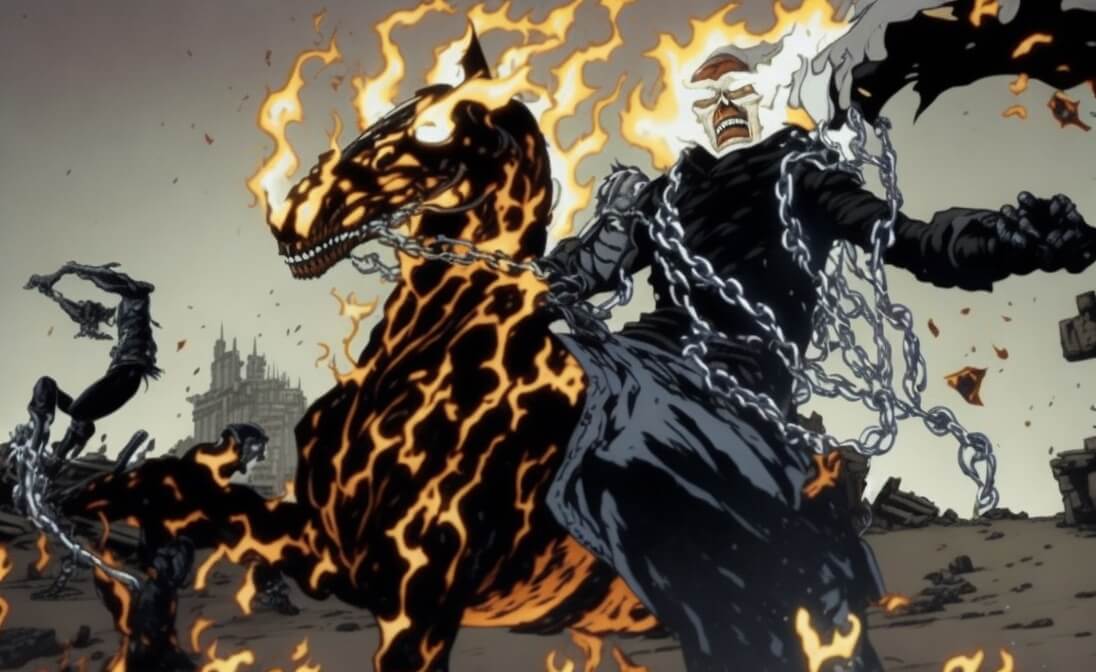
Literary depiction of the ghost rider persona
From the pages of spine-chilling horror novels to the panels of comic books, the Ghost Rider is an enduring character in literature. This supernatural figure’s haunting tales of vengeance, justice, and redemption have captivated readers worldwide.
Famous authors like Stephen King and Neil Gaiman have beautifully portrayed the Ghost Rider persona in their works. For instance, King’s character, Roland Deschain, from the Dark Tower series, has many similarities with the Ghost Rider. The author paints a vivid picture of a relentless pursuer of justice, reminding readers of the Ghost Rider’s relentless pursuit of vengeance.
Analyzing themes and symbols associated with ghost riders
The Ghost Rider persona is rich in symbolism and underlying themes. One of the key themes is the pursuit of justice, often delivered with a sense of supernatural vengeance. It emphasizes that actions have consequences, a universal concept found in many cultures’ moral codes.
The image of a spectral motorcyclist speeding down lonely roads also embodies freedom and rebellion. It represents the rider’s refusal to be confined by societal norms, a sentiment that resonates with many, especially in our increasingly controlled and surveilled world.
Influence of ghost riders in classic and contemporary literature
The influence of Ghost Riders extends beyond just their stories. They have become a symbol, a metaphor used by authors to explore deeper themes and questions about human nature, morality, and society.
In classic literature, ghost riders often symbolized imminent danger or a harbinger of doom. However, contemporary literature presents a nuanced view. Authors use the Ghost Rider character to explore themes of personal sacrifice, the thin line between good and evil, and the complexity of human morality.
Ghost Rider on the Silver Screen: Impact on Movies and Pop Culture
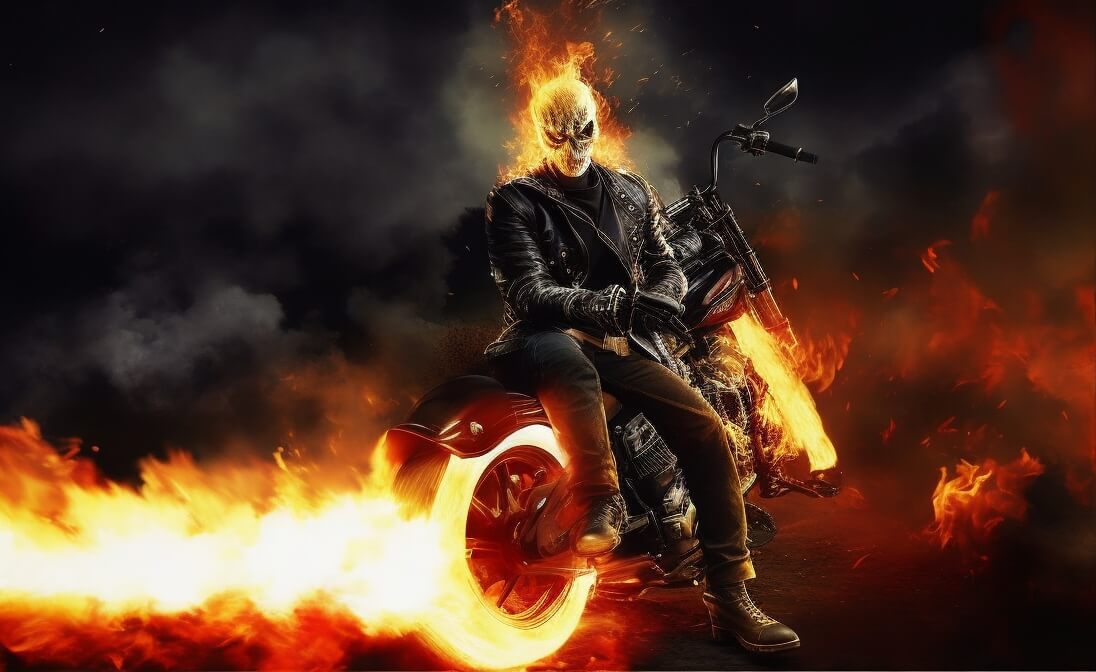
Analyzing the influence of ghost rider legends on cinema
Cinema, being a powerful medium of storytelling, has long been fascinated with the Ghost Rider’s haunting allure. From the wild motorcycle stunts of “Easy Rider” to the supernatural thriller “Ghost Rider,” movies have used this character to explore themes of freedom, rebellion, and vengeance.
This has had a profound influence on the way society perceives motorcycles and those who ride them. The image of the lone rider, a rebel who lives by his own rules, is now an integral part of popular culture.
Popular ghost rider movies and their cultural impact
The “Ghost Rider” movie franchise, with its fiery motorcycle and skull-headed protagonist, has taken the Ghost Rider legend to new heights. While these films have added a Hollywood twist to the Ghost Rider myth, they’ve also helped cement this character’s place in popular culture.
Another notable film is “The Motorcycle Diaries,” which, while not directly about a ghost rider, shares similar themes of exploration, self-discovery, and the pursuit of freedom on two wheels.
Depiction of ghost riders in media and TV series
Beyond the silver screen, the Ghost Rider has also made a mark on television. Series like “Sons of Anarchy,” while not about ghost riders, encapsulate the same spirit of rebellion and freedom that the Ghost Rider stands for. They’ve contributed to the popularity of the biker culture and, by extension, the Ghost Rider myth.
Ghostly Encounters: Firsthand Accounts and Sightings
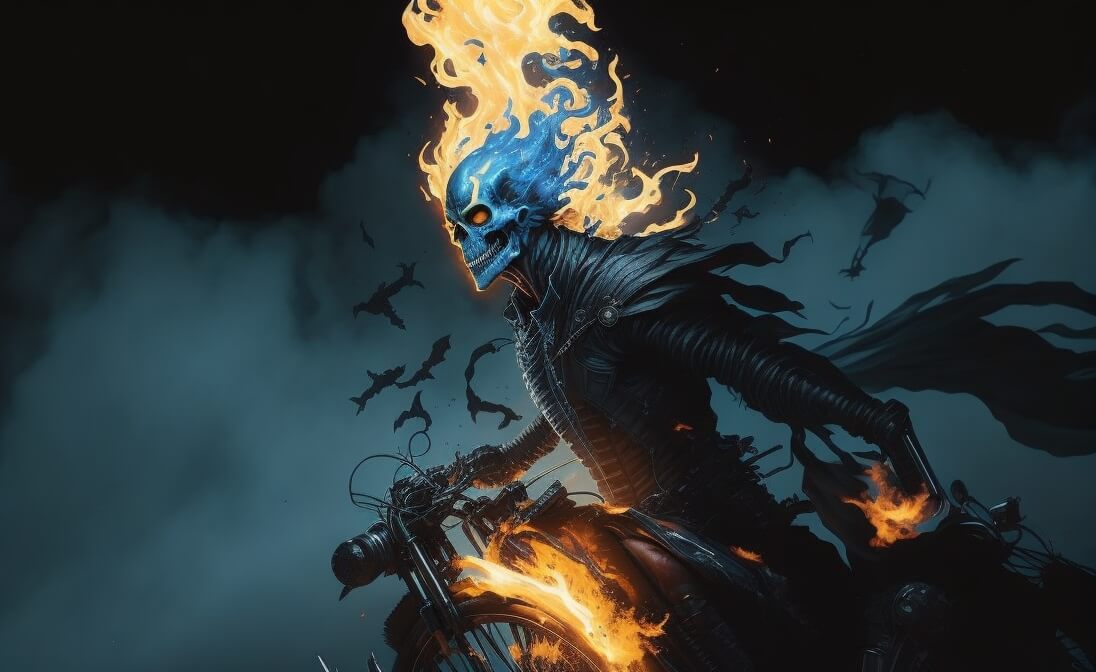
Unveiling personal encounters with the alleged ghost rider
Stories of personal encounters with the Ghost Rider add a tantalizing layer of mystery to this legend. These tales, often passed down through generations, speak of spectral motorcyclists appearing out of nowhere, usually on deserted roads in the dead of night.
One such account from the backroads of Texas tells of a phantom biker known as the “Headless Horseman of Route 66.” According to the tale, a headless figure atop a roaring motorcycle is seen riding down the highway, disappearing as suddenly as it appeared.
Analyzing historical records and testimonies of sightings
While these stories are fascinating, it’s essential to approach them with a critical eye. Are these sightings the result of genuine paranormal activity, or can they be attributed to optical illusions, pranks, or even hallucinations?
Historical records of Ghost Rider sightings are scarce and often rely heavily on personal testimonies. Moreover, sightings often occur in secluded areas and under low-visibility conditions. This makes it challenging to definitively prove or disprove these accounts.
Exploring the credibility and implications of these encounters
Regardless of their veracity, these Ghost Rider encounters hold a certain significance. They reflect our inherent fascination with the unknown and the supernatural. They also underscore the enduring popularity and cultural significance of the Ghost Rider legend.
Motorcycle Diaries: Ghost Rider’s Significance in Biker Culture
Role of the ghost rider in shaping the motorcycle culture
Motorcycle culture, with its emphasis on freedom, individualism, and rebellion, shares a deep bond with the Ghost Rider legend. The Ghost Rider embodies the spirit of adventure and defiance against conformity that is central to biker culture.
In many ways, the Ghost Rider has helped shape motorcycle culture’s image. It has contributed to the mystique and allure that surrounds bikers and biking.
Analysis of biker symbolism related to the ghost rider
Biker culture is rich in symbolism, and the Ghost Rider fits seamlessly into this tapestry. The image of a spectral biker speeding down the highway is a powerful symbol of freedom and fearlessness.
Motorcycles, for many riders, symbolize an escape from the mundane, a ticket to a world where they set the rules. The Ghost Rider, an ethereal being unbound by earthly restrictions, encapsulates this spirit perfectly.
Understanding why ghost rider is revered by biking enthusiasts
The Ghost Rider is revered by biking enthusiasts because it represents the essence of what they love about motorcycling. The open road, the thrill of speed, the roar of the engine, and a sense of unbounded freedom are all parts of the biker experience that the Ghost Rider epitomizes.
Moreover, the Ghost Rider’s enduring struggle for justice resonates with many bikers who view themselves as modern-day knights, crusading against societal restrictions and injustices.
The Ghost Rider and His Peers: Comparisons with Other Mythological Figures
Comparative study of ghost rider with other mythological characters
When compared with other mythological characters, the Ghost Rider holds a unique position. Many mythological figures represent deities or heroic mortals, but the Ghost Rider stands as a spectral entity, a being of the supernatural realm.
Consider, for instance, Hercules from Greek mythology. Both Hercules and the Ghost Rider undertake heroic missions. Yet, while Hercules is celebrated for his strength and valor, the Ghost Rider is a tragic figure, forever cursed to roam the earthly realm, delivering justice from beyond the grave.
Distinguishing similarities and differences in their stories
Similarities between the Ghost Rider and other mythological figures lie primarily in their quest for justice and their role as agents of karma. Like the Furies of Greek mythology, who pursued wrongdoers relentlessly, the Ghost Rider is a relentless pursuer of justice.
However, a key difference lies in the nature of their existence. While most mythological figures are of divine or semi-divine origin, the Ghost Rider is often portrayed as a mortal condemned to a spectral existence due to a tragic or unjust event.
Relevance of ghost riders in the broader mythology spectrum
The relevance of the Ghost Rider in the broader mythology spectrum is significant. As a modern mythological figure, the Ghost Rider reflects contemporary societal issues, such as the struggle against oppressive systems and the quest for personal freedom. This relevance to contemporary life has ensured the Ghost Rider’s enduring popularity and cultural significance.
The Legend Evolves: Modern Interpretations of the Ghost Rider
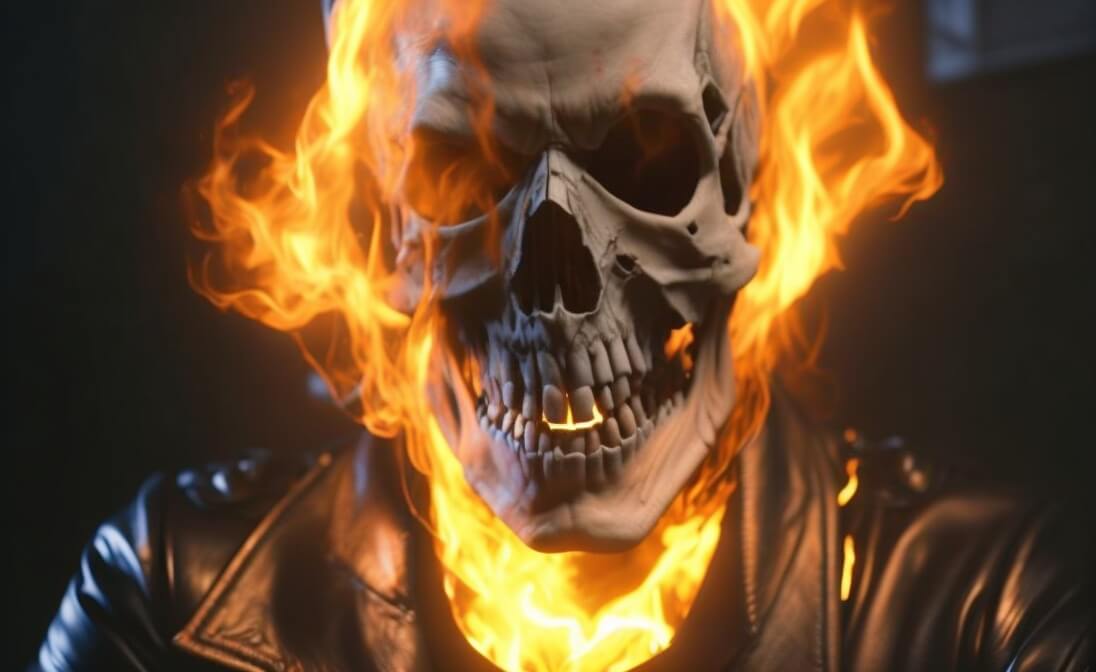
Contemporary interpretations of the ghost rider legend
Contemporary interpretations of the Ghost Rider legend have evolved with changing societal values and norms. Today’s Ghost Rider stories often grapple with complex issues such as personal sacrifice, the morality of vengeance, and the grey areas of justice.
For instance, in recent comic book adaptations, the Ghost Rider is often portrayed as a tormented soul seeking redemption, providing a more nuanced and sympathetic portrayal of this spectral figure.
Ghost rider characters in modern literature, comics, and digital media
Modern literature, comics, and digital media have all contributed to the Ghost Rider legend’s evolution. Characters inspired by the Ghost Rider, like Johnny Blaze in the Marvel comics, have become cultural icons in their own right.
These characters bring the Ghost Rider legend to a new generation of fans, ensuring the story’s continuation and adaptation to modern sensibilities. They also reflect how digital media and modern storytelling techniques can breathe new life into ancient myths and legends.
The future of the ghost rider legend in an ever-evolving digital age
As we move further into the digital age, the Ghost Rider legend is likely to continue evolving. New mediums like virtual reality and augmented reality present exciting opportunities for immersive Ghost Rider experiences.
Regardless of how technology changes the way we tell stories, the essence of the Ghost Rider – the quest for justice, the spirit of rebellion, and the allure of the unknown – will continue to resonate. The Ghost Rider legend, like the figure it represents, is destined to endure, capturing the imaginations of generations to come.
Conclusion: The Unending Journey of the Ghost Rider
As we’ve journeyed through the myths, history, literary interpretations, and cultural impact of the Ghost Rider, we’ve seen a consistent thread: the allure of the open road, the search for justice, and the resonance of rebellion against societal norms. This spectral motorcyclist, wreathed in flames and mystery, stands as an enduring symbol of freedom, vengeance, and an indomitable spirit.
The Ghost Rider’s journey is not one of a singular path but a multitude of trails blazed across different mediums and cultures. From campfire tales and folklore to the glitz of Hollywood, from the rumble of motorcycles on the open road to the silent panels of comic books, the Ghost Rider has left an indelible mark. This character’s journey mirrors our own – a quest for freedom, justice, and the thrill of the ride.
As we look to the future, the Ghost Rider’s tale is far from over. The legend will continue to evolve, shaped by new interpretations and retellings, molded by technological advancements in storytelling. As long as there’s a road to travel and a tale to tell, the Ghost Rider will endure, a fiery beacon in the cultural landscape.
In essence, the Ghost Rider serves as a reminder of our innate desire for freedom and our pursuit of justice, embodying these universal human traits in a haunting, captivating persona. The Ghost Rider’s influence on biker culture and beyond attests to the enduring allure of this spectral rider’s journey. A journey that, much like the Ghost Rider himself, is destined to go on, forever imprinted on the highways of our collective imagination.
